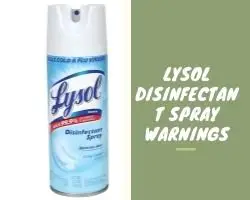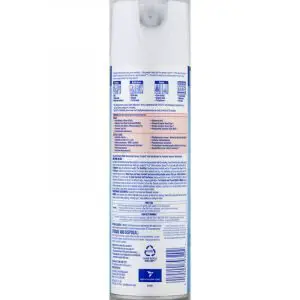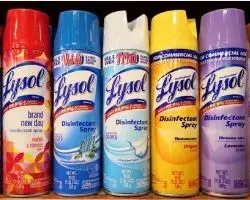Lysol disinfectant spray warnings. In this contemporary world, when we are facing a global issue in the shape of the COVID-19 pandemic, the value of disinfectants has surged.
The use of disinfectant sprays in our indoor spaces has become the foremost need of the era to kill the possible presence of a virus on our surfaces.
Lysol disinfectant spray warnings
To ensure the safe and effective use of a disinfectant spray in your indoor spaces, you need to take it into consideration.
Before using Lysol disinfectant spray, read the warnings and directions of use on the spray bottle carefully.
- The first and foremost thing that you need to keep in mind while spraying the disinfectant spray is to ensure that the room is facilitated with proper ventilation.
- You should wear protective rubber gloves and eye protection to avoid accidental splashes.
- Use the recommended amount of spray, not more than that.
- Try not to do any self-experimentation of mixing chemicals with the spray; this could lead to some unwanted situations.
- Like any other chemical and medicine, keep the disinfectant spray out of the reach of children.
- Since the disinfectant spray consists of dangerous and poisonous chemical formulas, so do not try to drink, inhale, or by any means dispense into your body.
- Do not let your cats, dogs, or other pets come in contact with the Lysol disinfectant spray as it could have a hostile effect on them.
Lysol disinfectant spray kills Germs viruses
Lysol disinfectant is used to kill and eliminate 99.9 percent of germs and viruses. Mostly germs and bacterias are present on the surfaces and planes that are in frequent contact with humans.
These bacteria and viruses are transferred to the people who come in contact with these polluted surfaces.
So in this sensitive age, it has become inevitable to ignore the virus and bacteria present in our surroundings, and this calls for an urgent need to use disinfectant sprays.
No matter where, you are all surrounded by germs, bacteria, and viruses. In your house, a surface that seems to be clean and hygienic might be covered by micro-dotted germs and viruses.
You want to fight off these dangerous and life-threatening germs. The only simple solution that comes to your mind is spraying disinfectants on your interiors.
Lysol disinfectant spray
By using the disinfectant spray, you could get rid of odor-causing bacteria that are present in the interior of your house. And also prevents the accumulation of molds and rusts.
Since the disinfectant you are using is killing the dangerous microbes around you, but while using the spray, you need to take precautions. Disinfectant Use Against COVID-19 Guide.
As it is harmful to a person. In this article, we are going to discuss the Lysol disinfectant spray warnings to keep you safe from the harmful effects of the disinfectant. Check Out chemical disinfectants safely!
Lysol disinfectant spray ingredients
-
ethanol/SD Alcohol, 40 1–3%; the fluid that acts as a sanitizer
-
isopropyl alcohol, 1–2%; partly responsible for Lysol’s strong odor; acts as a sanitizing agent and removes odor
-
p-Chloro-o-benzyl phenyl, 5–6%; antiseptic
-
o-Phenylphenol, 0.1%; antiseptic; in use circa 1980s
-
potassium hydroxide, 3–4%
-
Alkyl (50% C14, 40% C12, 10% C16) dimethyl benzyl ammonium saccharinate, 0.10%; microbiocide
-
Alkyl (C12-C18) dimethyl benzyl ammonium chloride, 0.08%; antiseptic
-
Alkyl (C12-C16) dimethyl benzyl ammonium chloride, 0.02%; antiseptic
-
lactic acid as an antiseptic.
-
hydrogen peroxide
Can Lysol help kill the new coronavirus strain?
Related Guides


